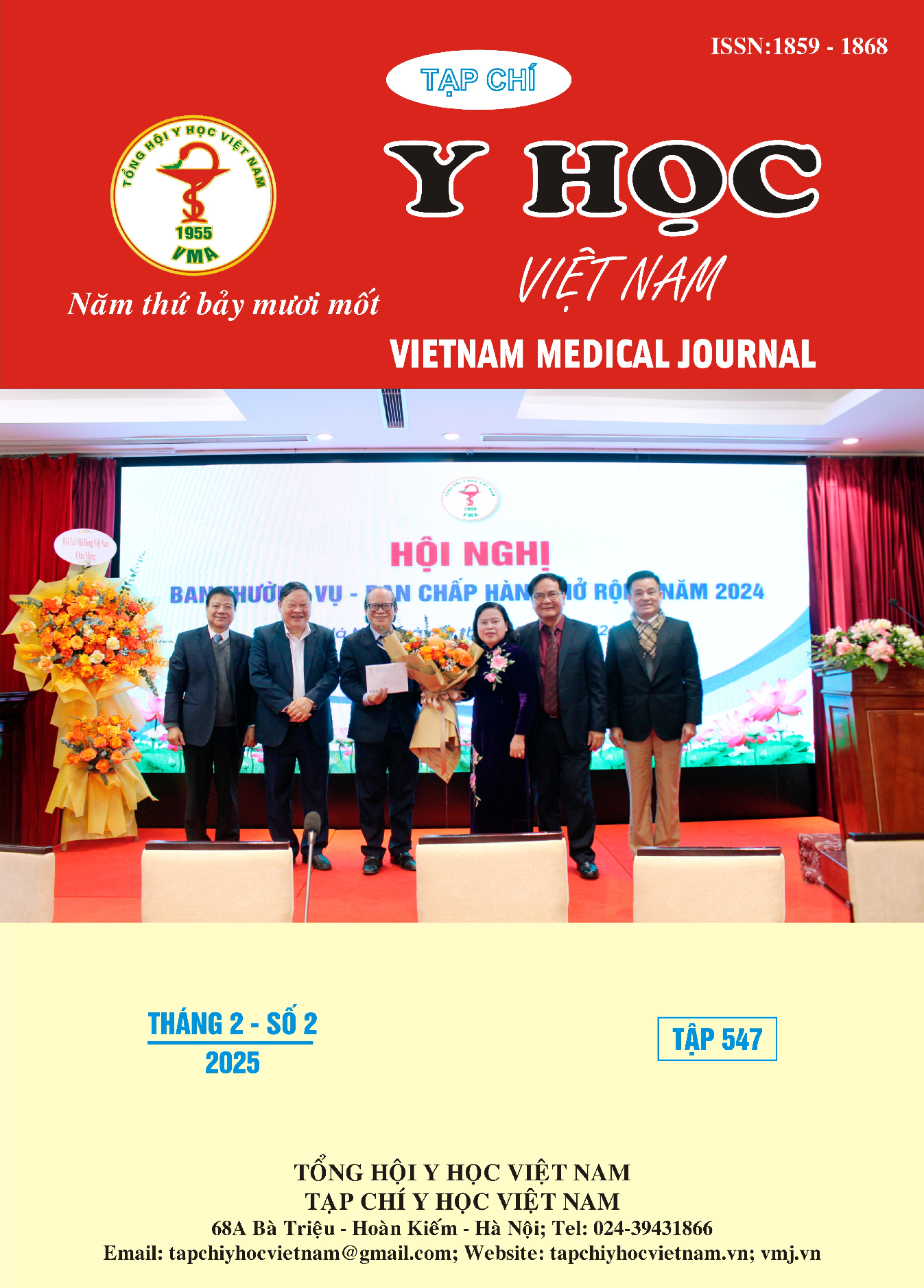IMPROVING EMERGENCY CARE CAPACITY FOR STROKE PATIENTS AT DISTRICT HOSPITALS IN HA GIANG PROVINCE
Main Article Content
Abstract
Ojective: To evaluate the results of improving the capacity of emergency stroke care at district hospitals in Ha Giang (HG) province. Methods: Cross-sectional descriptive study, longitudinal follow-up of stroke patients who were given emergency care and treated at hospitals in HG province: Bac Quang, Vi Xuyen, Yen Minh, Dong Van, Quang Binh, Hoang Su Phi, Duc Minh and HG Provincial General Hospital from March 2024 to December 2024. Results: 177 examinations with 167 stroke patients were treated. The rate of stroke emergencies was highest at the provincial general hospital (42,9%) and uneven among district hospitals. The number of stroke cases admitted to hospitals has trended to increase by month. District hospitals transferred 2,4% of stroke patients to the provincial hospital and the provincial hospital transferred 5,3% of patients to the central hospitals. Patients who were transferred were mainly ICH and SAH. Men accounted for 62,3% and young patients under 45 years old for mde up 12% of participants. The rates of ischemic stroke, ICH and SAH were 55,7%; 38,2% and 6,1% respectively. 19,3% of ischemic stroke patients were treated reperfusion therapy and 3,1% of ICH patients underwent surgery and 40% of SAH patients underwent intervention. After 90 days, the proportion of stroke patients with good neurological outcomes was 49,1% and the best was ischemic stroke (54,8%). Conclusion: The abilities to treat stroke of hospitals were different. The abilities of hospitals to provide stroke emergency care have tended to increase, especially at district hospitals. The emergency competency to treat ischemic stroke was best among the three types of stroke.
Article Details
Keywords
Stroke, outcome of treatment, Ha Giang Province.
References
2. Báo cáo kết quả khảo sát, đánh giá năng lực cấp cứu đột quỵ não tạo các cơ sở khám chữa bệnh tuyến huyện. November 2023.
3. Hướng dẫn chẩn đoán và điều trị đột quỵ não. Bộ y tế, số 3312/QĐ-BYT, ngày 5 tháng 11 năm 2024.
4. Báo Cáo Kết Quả Khảo Sát, Đánh Giá Năng Lực Cấp Cứu Đột Quỵ Não Tạo Các Cơ Sở Khám Chữa Bệnh Tuyến Huyện. Sở Y tế Hà Giang - Bệnh viện đa khoa Tỉnh; 2023.
5. Hà XK, Trương TA, Vũ ĐS, Hồ PT. Chất lượng cuộc sống của người bệnh sau đột quỵ não điều trị tại Bệnh viện Đa khoa tỉnh Hà Giang năm 2021. Tạp Chí Khoa Học Điều Dưỡng. 2021;4(3): 83-94.
6. Ton MD, Dao PV, Nguyen DT, et al. Sex disparity in stroke outcomes in a multicenter prospective stroke registry in Vietnam. Int J Stroke. 2023;18(9):1102-1111.
7. George MG. Risk Factors for Ischemic Stroke in Younger Adults. Stroke. 2020;51(3):729-735.
8. Bệnh viện huyện miền núi làm chủ kỹ thuật cao cứu sống người bệnh mắc đột quỵ trong giờ vàng. Cổng thông tin bệnh viện Bạch Mai. https://bachmai.gov.vn/tin-chi-tiet/-/bai-viet/benh-vien-huyen-mien-nui-lam-chu-ky-thuat-cao-cuu-song-nguoi-benh-mac-dot-quy-trong-gio-vang- 9343-144.html. Accessed November 28, 2024.
9. Muehlschlegel S. Subarachnoid Hemorrhage. Contin Lifelong Learn Neurol. 2018;24(6):1623.


